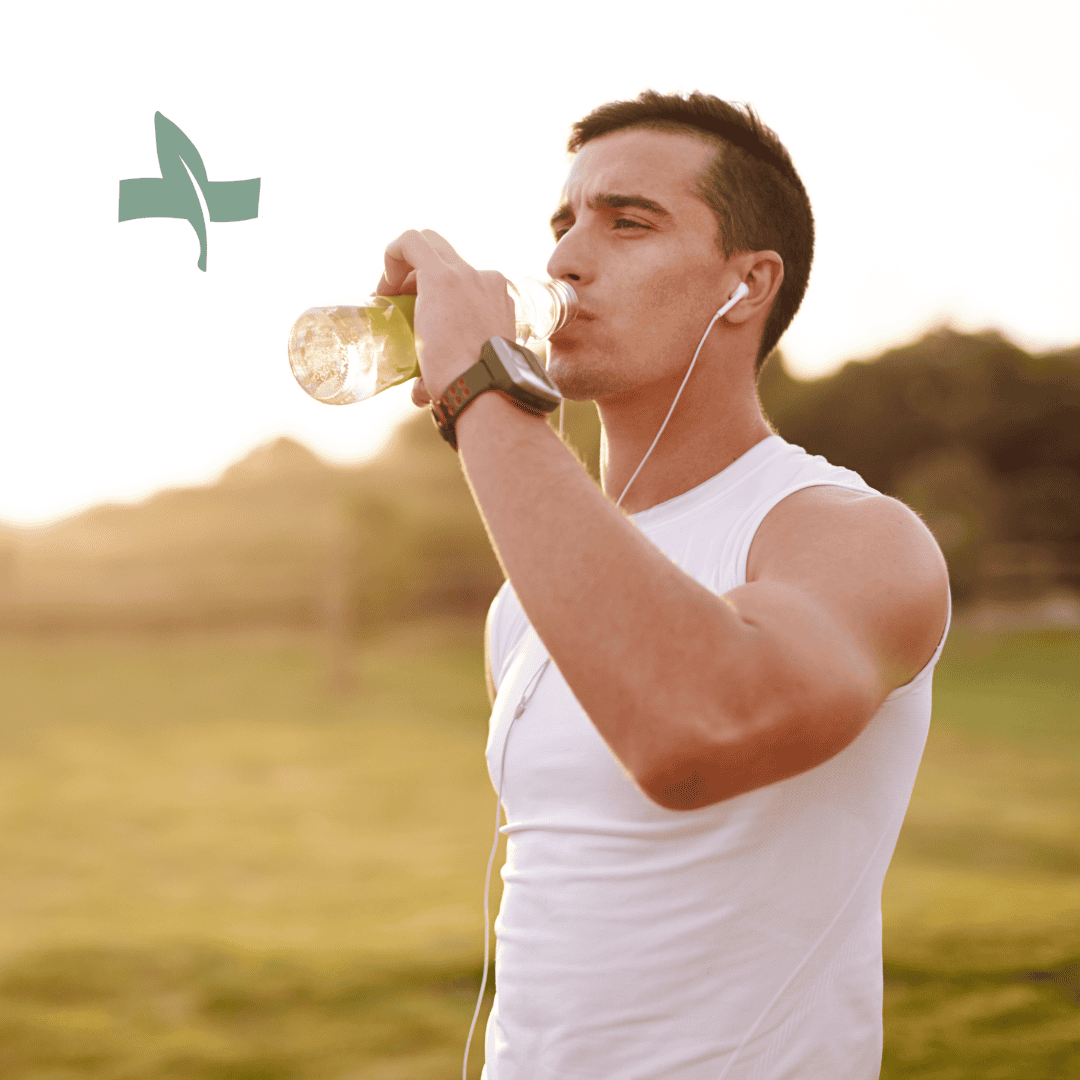Electrolytes for Hydration and Daily Energy
Electrolytes are minerals that carry an electric charge and help regulate fluid balance, nerve signaling, and muscle contraction. In daily life, the right electrolyte balance supports steady hydration, helps prevent fatigue and cramps, and keeps blood pressure and pH within healthy ranges. Most people meet needs with food and water, while targeted electrolyte drinks can help during heat, exercise, or illness. Understanding when to choose water, when to add sodium, potassium, magnesium, or calcium, and how to do so safely can improve energy and overall well-being.
This article explains evidence-based uses, food sources, and safety tips you can apply today. For informational purposes only and not a substitute for professional medical advice, diagnosis, or treatment.
What are electrolytes?
Electrolytes are minerals that carry an electric charge in your body fluids and enable essential functions: nerve signaling, muscle contraction, fluid balance, blood pressure control, and acid–base balance. The major electrolytes are sodium, potassium, chloride, calcium, magnesium, phosphate, and bicarbonate. You get them from food and drinks. Water hydrates but does not supply electrolytes. When levels drift too low or too high, symptoms like fatigue, cramps, headache, or irregular heartbeat can appear, especially with heavy sweating, heat, or illness.
Key roles at a glance
Sodium and chloride: regulate fluid balance and blood pressure
Potassium: supports muscle function and heart rhythm
Calcium: drives muscle contraction and nerve transmission
Magnesium: stabilizes nerve signaling and energy metabolism
Phosphate and bicarbonate: help maintain normal pH
How electrolytes support hydration and energy
Electrolytes do not provide calories, yet they power the systems that help you feel energized. In the small intestine, sodium and glucose move together and draw water along with them, which makes hydration more efficient. Potassium balances fluid inside cells so muscles fire smoothly. Calcium triggers muscle contraction and nerve transmission, while magnesium supports relaxation and steady electrical signaling. Chloride and bicarbonate help keep blood pH within a healthy range so enzymes and muscle fibers can work as intended.
Balanced electrolytes matter for everyday life. They support normal nerve and muscle function, which can reduce fatigue and cramping. Adequate sodium helps you retain the right amount of fluid instead of flushing it too quickly. During heat or long workouts, targeted electrolyte intake replaces what you lose in sweat so heart rate, blood pressure, and muscle function remain stable. Proper fluid and electrolyte status also supports clear thinking by maintaining healthy blood flow and neuronal signaling.
In practical terms, plain water hydrates but does not supply electrolytes. Most people meet electrolyte needs through food on typical days. Extra electrolytes are most helpful during prolonged sweating, hot environments, gastrointestinal illness, or when starting a low-carb diet that increases fluid loss.
Electrolytes vs water: when to choose each
For most routine days, plain water plus regular meals is enough to stay hydrated. Short workouts, desk work, and errands rarely require added electrolytes because your diet supplies sodium, potassium, magnesium, calcium, and chloride. If you are thirsty, your urine is pale yellow, and you are not experiencing cramps or dizziness, water is the right first choice.
Electrolytes become useful when fluid and mineral losses rise. Examples include continuous exercise beyond about an hour, high sweat rates in hot or humid weather, physically demanding jobs, long sauna sessions, or recovery from vomiting or diarrhea. In these situations, sodium helps your body absorb and hold onto fluid, while potassium supports muscle and nerve function. People transitioning to a low-carb diet may also benefit temporarily because lower insulin and glycogen can increase fluid loss.
Use labels to guide smarter choices. Pick an electrolyte drink or powder with a sensible amount of sodium and some potassium, and keep added sugars moderate unless you need fuel for endurance efforts. Oral rehydration solutions are formulated for dehydration from illness and are not designed for everyday sipping. If you have kidney disease, heart failure, high blood pressure, or take diuretics or medications that affect potassium, talk to a clinician before using electrolyte products regularly.
Sports drinks vs powders vs ORS
Electrolyte options are not all the same. Sports drinks combine water, carbohydrates, and sodium for fueling and hydration during longer exercise. Electrolyte powders usually offer flexible dosing with little or no sugar for everyday heat or sweat needs. Oral rehydration solutions (ORS) use a precise sodium–glucose ratio for dehydration from illness and are not meant for routine sipping.
Sports drinks
Designed for endurance or stop-start training that lasts longer than about an hour.
Provide fluid plus carbohydrates for energy and sodium to aid absorption and retention.
Best when you need both hydration and fuel during workouts or competitions.
Watch for added sugars if you are not exercising intensely.
Electrolyte powders
Mix with water to add sodium and other minerals without much sugar.
Useful for hot, humid conditions, physically demanding jobs, or when you sweat heavily.
Flexible: you can adjust strength based on taste, sweat rate, and duration.
Choose products that list sodium and potassium amounts clearly and avoid unnecessary additives.
Oral rehydration solutions (ORS)
Medical-style formula that pairs sodium with glucose to treat dehydration from vomiting or diarrhea.
Highly effective during gastrointestinal illness and heat illness recovery under guidance.
Not intended as a daily beverage because the sodium and glucose targets are optimized for rehydration, not casual use.
If you have kidney disease, heart failure, or are on diuretics, seek clinician advice before using.
Safety and when to see a clinician
Electrolytes support hydration, muscle function, and heart rhythm, yet more is not always better. The right approach depends on your health history, medications, and how much you sweat or lose fluids. Use the guidance below to stay safe and know when to seek care.
Who should be cautious
Chronic kidney disease, heart failure, or uncontrolled high blood pressure
On medications that affect fluid or potassium balance, for example diuretics, ACE inhibitors, ARBs, spironolactone
History of arrhythmia or significant heart disease
Pregnant or breastfeeding
Older adults with reduced thirst or variable appetite
Anyone on a very low-carb diet early in the transition period
Red flags that need urgent care
Fainting, chest pain, severe weakness, confusion, or seizure
Persistent vomiting or diarrhea, signs of dehydration in children or older adults
Swelling in legs or sudden weight gain that may suggest fluid overload
Palpitations with dizziness, especially if new or worsening
Food-first electrolyte sources
Prioritize food and regular hydration before reaching for packaged drinks. A balanced plate supplies sodium, potassium, magnesium, and calcium in forms your body handles well, while also adding fiber, vitamins, and phytonutrients that support recovery and steady energy.
Sodium
Sodium mainly comes from salt added during cooking and food processing. Most people get enough without trying. If you sweat heavily or train in the heat, lightly salting meals or using iodized salt in soups, eggs, and grain dishes can help you replace losses in a controlled way rather than relying on sweet beverages.
Potassium
Potassium is abundant in fruits, vegetables, legumes, dairy, and fish. Bananas, oranges, potatoes, tomatoes, leafy greens, beans, yogurt, and salmon are reliable choices. Regular potassium intake helps balance the effects of sodium, supports normal blood pressure, and keeps muscles and nerves firing smoothly.
Magnesium
Magnesium supports muscle relaxation and cellular energy pathways. Nuts, seeds, whole grains, beans, and dark leafy greens are dependable sources. Many refined foods are lower in magnesium, so building meals around oatmeal, quinoa, black beans, pumpkin seeds, almonds, spinach, and similar staples improves daily intake.
Calcium
Calcium helps trigger muscle contraction and nerve transmission while supporting bone health across the lifespan. Milk, yogurt, and cheese are classic options. Fortified plant milks and orange juice, canned fish with bones, tofu set with calcium, and greens such as kale or bok choy also contribute meaningful amounts. Pairing calcium sources with vitamin D rich foods improves absorption.
When food may not be enough
Food plus water is usually sufficient on desk days and short workouts. During prolonged heat, endurance training, or recovery from vomiting or diarrhea, targeted electrolyte drinks or powders can bridge a temporary gap until normal eating returns. If you have kidney or heart disease or take medications that affect potassium or fluid balance, seek clinician guidance before using electrolyte products regularly.
How to choose an electrolyte drink
Not all electrolyte drinks serve the same purpose. Start by deciding when and why you need one. If you are training longer than an hour, working in heat, or recovering from fluid loss after an illness, a drink with sodium and some potassium can support faster, more complete rehydration than water alone. For ordinary desk days, water plus balanced meals is typically enough.
When you read the label, look for meaningful amounts of sodium and a listed amount of potassium per serving. Choose a sugar level that fits your situation: higher carbohydrate content can help during endurance efforts, while low or no added sugar is appropriate for light activity or heat without intense exercise. Favor short ingredient lists and skip unnecessary colorants or stimulants. If you have kidney or heart disease, high blood pressure, or take medications that affect potassium or fluid balance, ask your clinician before using electrolyte products regularly.
References
Shrimanker I, Bhattarai S. Electrolytes. Treasure Island (FL): StatPearls Publishing; 2025 Jan-. Available from: https://www.ncbi.nlm.nih.gov/books/NBK541123/
Rowlands, D. S., Kopetschny, B. H., & Badenhorst, C. E. (2022). The Hydrating Effects of Hypertonic, Isotonic and Hypotonic Sports Drinks and Waters on Central Hydration During Continuous Exercise: A Systematic Meta-Analysis and Perspective. Sports medicine (Auckland, N.Z.), 52(2), 349–375. https://doi.org/10.1007/s40279-021-01558-y
related blogs




